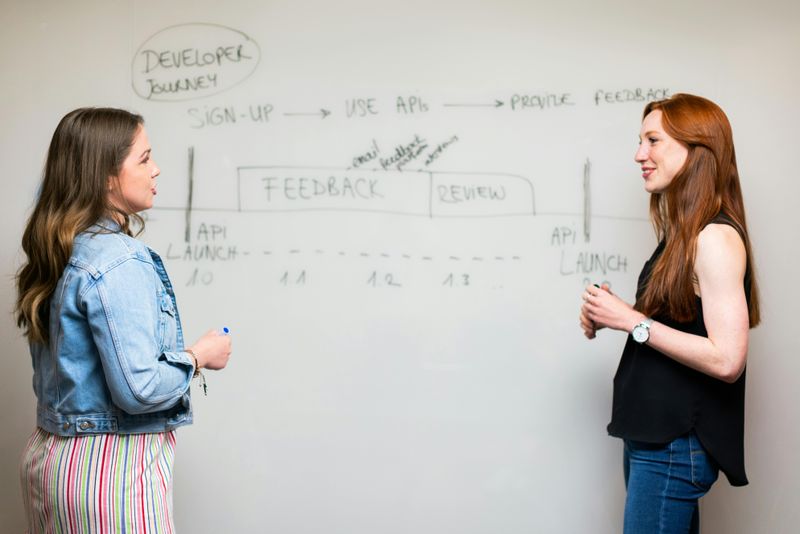14 Everyday Phrases That Instantly Make You Sound Smarter

Want to sound sharper without memorizing a dictionary? The secret isn’t big words—it’s better questions, clearer framing, and thoughtful pauses.
These everyday phrases help you steer conversations toward clarity and results, while signaling confidence and humility. Try them out, and watch meetings tighten, debates soften, and your influence quietly expand.
1. Let me make sure I’m understanding you correctly…

Clarity is a power move, and this phrase flips the switch. Rather than nodding along, you pause to mirror back what you heard, showing good faith and sharp attention. People feel respected, and miscommunications get caught early.
Use it when discussions speed up or stakes feel high. It slows the tempo without killing momentum, aligning everyone on the same facts. You’re not challenging; you’re calibrating.
Bonus tip: paraphrase succinctly, then ask, “Did I capture that?” If they say yes, you’ve built trust. If not, you’ve avoided a costly detour. Either way, you sound thoughtful.
2. That’s a fair point—have you considered…?

Constructive disagreement is an art, and this phrase is your paintbrush. You validate the other person before gently redirecting toward an alternative angle. It keeps egos cool and minds open.
Start with genuine acknowledgment, not empty flattery. Then, add a thoughtful counterpoint or new variable: cost, timing, risk, or user impact. The goal isn’t winning; it’s widening the lens.
Use it in brainstorming, strategy discussions, or tense debates. You’ll avoid defensiveness and still move the conversation forward. Smart people aren’t louder—they’re smoother.
3. From what I understand so far, it sounds like…

Summarizing midway through a discussion acts like a checkpoint on a long hike. You’re confirming the trail before sprinting ahead. This instantly makes you a reliable navigator in messy conversations.
Keep it crisp: highlight the goal, constraints, and open questions. If you’re off, others will course-correct without friction. If you’re on, you’ve locked alignment.
It also signals that you’re actively synthesizing, not just hearing words. In fast-moving teams, synthesis is a premium skill. Use it to reduce confusion and earn authority without grandstanding.
4. Can you walk me through your reasoning?

Curiosity beats criticism every time. This question invites the other person to reveal assumptions, data sources, and thought process. You’re not poking holes—you’re turning on the lights.
It works beautifully when proposals feel rushed or mysterious. As they explain, you can spot gaps or strengths with less friction. It’s a dialogue, not an interrogation.
Pro tip: listen for default biases, overconfident leaps, and missing constraints. Then ask follow-ups like, “What would change your mind?” You’ll elevate the conversation and model intellectual humility.
5. What’s your perspective on this?

Inclusive questions are leadership in disguise. By opening the floor, you collect context you didn’t know you were missing. This phrase unlocks quieter voices and surfaces hidden expertise.
Use it when decisions stall or the same two people dominate. Rotate perspectives: engineering, operations, customers, finance. You’ll spot trade-offs that were invisible five minutes earlier.
It also shows confidence: you’re not threatened by differing views. People follow leaders who listen thoughtfully and decide clearly. Start with curiosity, end with consensus or a crisp call.
6. Let’s take a step back and look at the bigger picture.

When debates get microscopic, this phrase lifts the room. You’re signaling that local optimizations might be sabotaging global outcomes. Big-picture thinking reduces rework and political skirmishes.
Reframe using time horizon, audience, or success metrics. Ask whether current choices support the overarching strategy. Suddenly, pet features shrink and priorities sharpen.
It’s especially useful in late-stage projects where sunk costs cloud judgment. Reset with broader goals, and watch alignment return. Strategic altitude is a credibility engine.
7. What problem are we actually trying to solve here?

Scope creep’s worst enemy is a pointed question. By naming the real problem, you avoid clever solutions to imaginary needs. This keeps teams from wandering into feature forests.
State the user, pain, and desired outcome in one sentence. If it’s hard to do, you’ve discovered the problem behind the problem. That clarity saves weeks.
Use it when conversations drift or when ideas feel flashy but unmoored. Align on the target, then brainstorm freely. Precision before creativity—that’s how smart work happens.
8. What evidence do we have for that?

Data humility is magnetic. This phrase separates confidence from confirmation bias, without sounding combative. You’re championing proof over volume.
Ask for sources, sample sizes, and counterexamples. If evidence is thin, propose a quick test or pilot. Suddenly, debates morph into experiments—way less emotional, way more useful.
Keep the tone neutral and the bar consistent. Evidence doesn’t kill creativity; it refines it. Smart is curious, not certain.
9. I don’t know, but I’d love to find out.

Confidence isn’t knowing everything; it’s knowing how to learn fast. This phrase disarms pressure while signaling initiative. People trust someone who admits limits and hunts answers.
Follow with a plan: who to ask, what to test, and when you’ll report back. Curiosity turns uncertainty into momentum. It also invites collaboration from unexpected allies.
Use it in interviews, client calls, or leadership reviews. You’ll project honesty without losing credibility. Growth mindset, embodied in one clean sentence.
10. Is there a more efficient way we could do this?

Process questions are productivity gold. This phrase challenges default habits without accusing anyone. You’re inviting optimization, not blame.
Probe for bottlenecks, redundant approvals, or manual steps ripe for automation. Sometimes the fix is a template; sometimes it’s deleting steps entirely. Even small tweaks compound over time.
Frame it as an experiment: try, measure, iterate. Teams love improvements that make their lives easier. Efficiency isn’t stingy—it’s generous with time.
11. What are the potential downsides we might be missing?

Optimism is great until it blinds you. This phrase invites a pre-mortem mindset—imagining failure before it happens. You lower risk without killing enthusiasm.
Encourage the group to list risks by likelihood and impact. Ask who owns each mitigation. Suddenly, brave ideas become safer bets.
Use it before big launches, hires, or budget decisions. Anticipation beats apology. Risk-aware optimism sounds very smart indeed.
12. Let’s clarify what our priorities are.

When everything is priority one, nothing is. This phrase pushes decisions out of the fog and onto the calendar. Trade-offs become visible, and scope becomes sane.
Rank by impact, effort, and urgency. Ask what gets deprioritized if something new appears. Clear priorities protect focus and morale.
Return to this phrase when drift appears or timelines slip. It’s not bossy—it’s boundary-setting. Smart teams treat attention like a budget.
13. Can we define what success looks like in this situation?

Ambiguity eats results for breakfast. This phrase draws a crisp finish line everyone can see. You’re building a shared scoreboard before the game starts.
Define success with metrics, behaviors, and timeframes: outcomes, not vibes. If success is fuzzy, execution will be too. The clearer the target, the stronger the teamwork.
Use it for projects, meetings, or even tricky emails. Once success is named, decisions become obvious. Alignment suddenly feels easy.
14. Let’s document decisions and next steps.

Memory is a terrible project manager. This phrase anchors clarity to paper (or pixels) and prevents déjà vu debates. Future-you will send a thank-you note.
Include who, what, when, and success criteria. Share the summary promptly so momentum doesn’t evaporate. Documentation turns talk into traction.
Use it to close meetings or wrap threads. Accountability feels fair when expectations are explicit. Smart sounds like follow-through.

Comments
Loading…